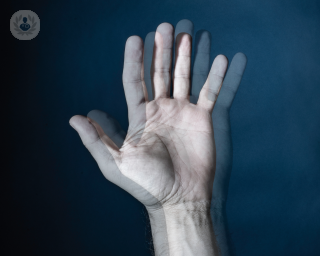Diplopia (double vision)
Mr Christos Moraitis - Ophthalmology
Created on: 01-27-2017
Updated on: 01-19-2024
Edited by: Conor Dunworth
What is diplopia?
Diplopia, also called double vision, is an eye condition in which the images perceived by the eyes are not processed in the brain as a single spatial image, and instead, the brain sees two images. Depending on its origin, it can be of two types:
- binocular: the most common type, where the eyes do not line up with each other correctly. It is usually related to strabismus.
- monocular: a much less common form that is characterised by double vision generated only by one eye. It is related to an abnormality of the eye, such as astigmatism or a type of cataract.

In terms of symptoms, diplopia can be categorised as:
- horizontal: the images appear side by side.
- vertical: the images appear one on top of the other.
- diagonal: the images appear misaligned both horizontally and vertically.
What are the symptoms of diplopia?
Apart from double vision, other symptoms can include:
- pain around the eyes
- pain during eye movements in one or both eyes
- headache
- nausea
- weakness (usually in the eyes)
- drooping eyelids
What causes diplopia?
There are many things which can cause diplopia, including:
- problems with the eye muscles such as Graves’ disease or myasthenia gravis
- eye injury from scars, dry eyes, or infections
- lens problems such as cataracts
- nerve problems as a result of diabetic retinopathy or multiple sclerosis
- brain damage due stroke, tumour, or alcohol
- congenital problems such as strabismus
Can diplopia be prevented?
Some causes of diplopia can be prevented, for example, by using the seatbelt in the car to avoid trauma, or by putting on glasses and head protection during any sporting activity or at work, if necessary. In addition, people with diabetes can lower the risk by controlling their blood sugar level.
What is the treatment for diplopia?
The treatment will depend on the causes of the disease, so it is important to first come to a definitive diagnosis through thorough eye testing and in some cases, blood tests or scans. Treatment may include medication or surgery to correct damage to the eye. If the double vision cannot be fully cured, you will be prescribed special glasses to improve your vision.










